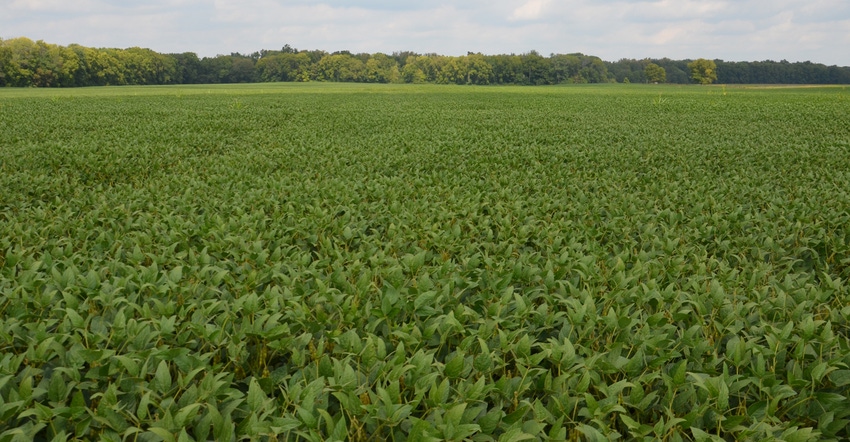
Some farmers planted soybeans in April. Many planted them in May. Several were still planting in early June. Still more planted double-crop soybeans very late. This means there will be a range for when soybeans reach the critical stage in their reproductive cycle this year.
“It’s true that flowering and reproduction in soybeans is largely triggered by the photoperiod response,” says Steve Gauck, regional agronomy manager for Beck’s. The company sponsors Soybean Watch ’20.
“However, planting date can still influence when soybeans mature, to some degree,” he continues. “We saw that happen in 2019, when so many soybeans were planted in June due to the super-wet spring.”
Shaun Casteel, Purdue University Extension agronomist, notes the critical period shifted from the traditional last two weeks of August to the first few weeks of September in 2019. In fact, the critical reproductive period has extended into September during the past couple of seasons, he says. That’s when soybeans are filling pods, and when adequate moisture and protection from stress are critical.
If you have early-planted soybeans in 2020, they may hit the critical window in the more traditional August time frame. That’s when the “million-dollar rain” can add several bushels per acre if it comes at the right time.
However, there will be other fields like the Soybean Watch ’20 field. It was planted June 5. Depending on weather conditions during the season, it could hit the most critical stage in late August or early September, especially for the later Group 3 varieties included in the field. Fortunately, irrigation is available in the Soybean Watch ’20 field. The grower will have the opportunity to minimize drought stress.
Growth stage factors into treatment
If you flip through the Purdue University Extension Corn & Soybean Field Guide and examine the soybean management section, you’ll notice that the amount of defoliation it takes to trigger spraying for pests that feed on soybean leaves decreases later in the season.
For bean leaf beetles, for example, it takes greater than 40% defoliation to trigger the economic threshold to spray if soybeans are still in vegetative stages. However, from beginning bloom to beginning seed stages, which are R1 through R5, spraying is recommended if you estimate 15% defoliation. At full seed stage, treatment is recommended if there is 25% defoliation.
The difference in when treatment is recommended varies because leaf loss is more critical when soybeans are trying to produce pods and begin filling them with seeds. “That’s when you want the least stress possible,” Gauck says. “It’s also why we suggest continuing scouting throughout the season.”
In fact, if beans are near maturity but 5% of marketable pods show damage with 10 or more bean leaf beetles per foot of row, spraying is still recommended.
The same principle explains why potential yield loss is predicted to be greater if defoliation occurs during critical reproductive stages. The loss of leaf area means less photosynthetic capacity, and it’s another stress that the plant doesn’t need.
According to the Purdue field guide, 50% defoliation of entire plants during any vegetative stage likely won’t impact yield. However, 50% loss at R3 could drop yields 8%, and 50% loss at R5 could drop yields 17%.
About the Author(s)
You May Also Like




